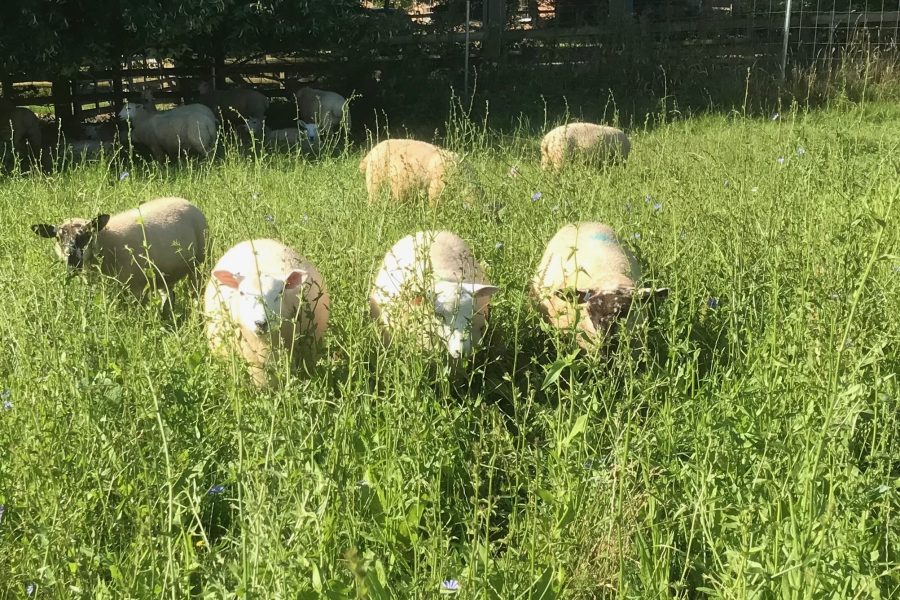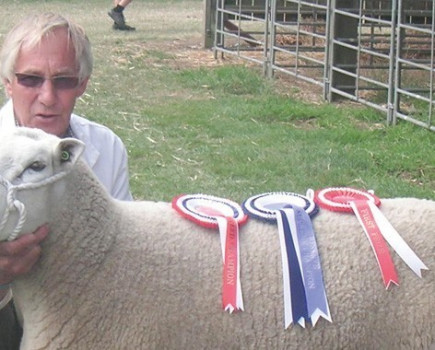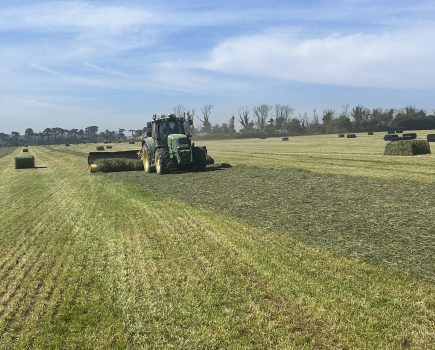Well this year seems to be continuing in much the same sort of vein as it started; an up, down, stop, start sort of a season. Summer is turning into a rather on/off one, a couple of nice, warm, sunny days punctuated by a few days of significantly colder and generally wet weather, meaning nobody knows quite where they are.
It has proved to be a difficult summer for both arable and livestock producers, with harvest and hay-making seemingly equally disrupted; even grass does not appear to be doing quite as well as one would expect given recent warm and wet growing conditions, with much of it struggling, I suspect, to catch up with what was a rather poor start to the year.
In spite of this, sheep seemed to have fared reasonably well, even when the weather has impacted on grass supplies and quality. The weather did delay shearing for many, and the wet spring will probably have an effect on wool quality. I know when the coats finally came off our sheep some of the fleeces, which looked well with good colour and style in the autumn, were quite disappointing. They were OK but I certainly didn’t have one, even off the ewe tegs, that I considered good enough for a show fleece.
Both the ewes and lambs were in remarkably good condition at weaning, all things considered. The latter looked particularly good; their mums, having obviously milked well, really did them well. I did expect that the ewes might have been milked off their backs a bit, but they appear to have both milked well and mostly held much of their condition, which is testament to the efficiency of the breed. They have had grass in front of them all season, although at times supplies have been a bit tight and of rather questionable quality; they have obviously dug deep.
The one down side has been the level of lameness this season, almost all down to scald, both in ewes and lambs. It’s not surprising, considering what they have had to tolerate in terms of wet and often long grass, but it has at times been a struggle to keep on top of it. Thank goodness for a bit of ‘blue spray’; a timely application generally knocks it on the head and a few ewes that were repeat offenders have already been culled. We have hit them quite hard this year. Foot problems generate a lot of unnecessary handling and soak up time, quite apart from the costs of treatment.
Having moved the lambs onto a bit of fresh grazing post weaning, their scald problems seem to have disappeared (hopefully), the ewes no doubt having been the source of infection. It’s an old saying that 90% of foot problems are generated by 10% of the sheep. I hope that’s correct and that having now culled the worst offenders we shouldn’t see too many further problems. The culling of repeat offenders is indirectly selecting the more resilient to foot problems, inasmuch as they have all been exposed to the same challenge and some (the problems), have succumbed and others haven’t. Anyway, for the rest of this summer it will be a blitz on foot problems, with strict monitoring, rapid and appropriate treatment of any sheep that show any signs of favouring a foot, and liming around the water troughs. The use of foot-rot vaccine is always an option, but to me that would simply be an admission of defeat, plus the fact that it becomes rather more difficult to identify and select for the more resilient sheep if problems are masked by vaccination. It’s also a nasty vaccine to use (apologies to vaccine manufacturers).
Undoubtedly, talking to people locally and at Sheep ’24 has confirmed that I am far from being alone; almost everybody I spoke to said that they had experienced significantly more foot problems this season (largely scald) than they would normally expect. Worm problems seem to be rather more varied, with some having had a terrible season and others reporting considerably fewer problems than they would normally expect. Fortunately we fall into the latter category.
With having only sheep and using basically the same grazing platform for the past 35 years, we know we have an issue with worms; with a bit of away grazing we do try to keep a few paddocks sheep-free for four or five months over the winter, but we accept that we need to worm lambs for the first time generally at about four weeks after lambing. This year, however, some early faecal egg counts (FEC) somewhat surprisingly showed a low incidence of worm eggs, particularly as, following current advice, the only ewes that were wormed at lambing were a few that were not quite as fit as their contemporaries and the first time lambers.
Past experience would have indicated that we needed to worm, but we could probably have got away without an early worm dose. Erring on the side of caution, and with a rising risk of Nematodirus at the time, rightly or wrongly we wormed anyway; in our defence I would say that it was only a dose of white wormer so not ridiculously expensive. We are not quite sure why we should have had such a low FEC; testing was good, so not an error there. The only things we can think of are that the hot, late summer may have had an impact on pasture contamination levels, that a few months on some clean grazing may have reduced further contamination when the ewes came back home for lambing or that having access to chicory, which has known anthelmintic properties, may have significantly reduced ewe worm burdens; it was probably a combination of all of these.
Anyway, the lambs only had one other dose of wormer at weaning, we haven’t had any dirty lambs and they are all growing very well, I think we have been rather lucky.
Pictured: The chicory in the herbal ley mix has rather got away from the lambs, but they seem to be enjoying it and are growing well
For more like this, sign up for the FREE South East Farmer e-newsletter here and receive all the latest farming news, reviews and insight straight to your inbox.







